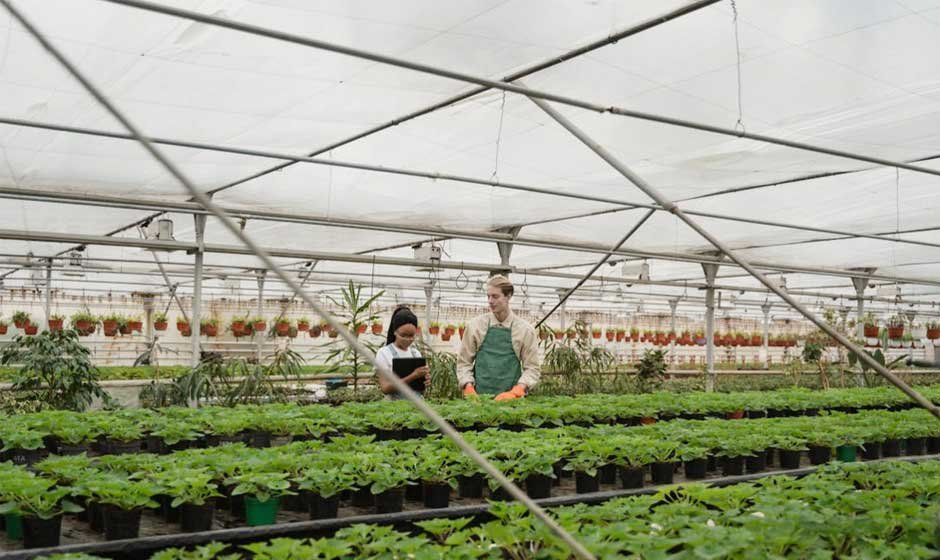Sustainable farming is no longer just an option – it is necessary in the face of climate change, population growth, and increasing pressure on natural resources. Traditional farming methods struggle to keep up with rising food demands while battling unpredictable weather, soil degradation, and water scarcity. Commercial greenhouse structures provide a reliable solution by creating controlled environments that optimize crop growth, minimize resource waste, and protect against extreme weather. These advanced farming systems allow year-round production, making food supply more stable and resilient. By integrating efficient water management, energy-saving technologies, and pest control strategies, greenhouse farming reduces environmental impact while increasing profitability.
Protection Against Extreme Weather Events
These conditions can devastate traditional farms, leading to significant financial losses. Commercial greenhouse structures offer a safeguard against these risks by shielding crops from external threats. Heavy rainfall and strong winds can damage plants, while excessive heat can cause dehydration and reduced yields. When it comes to protection, a commercial Rimol greenhouse or other reputable services provide durable, high-quality structures designed to withstand harsh weather conditions, making sure that your crops remain safe from extreme temperatures, heavy rainfall, and strong winds. This level of protection is particularly beneficial for high-value crops that require precise growing conditions, such as strawberries, peppers, and specialty herbs.
Year-Round Crop Production
Commercial greenhouse structures eliminate this uncertainty by creating controlled environments where temperature, humidity, and light exposure can be adjusted according to crop requirements. This means you can produce fresh vegetables, fruits, and herbs continuously, regardless of the external climate. With climate-controlled greenhouses, you no longer have to worry about frost, droughts, or excessive rainfall ruining your crops. This is particularly important in regions with short growing seasons or unpredictable weather patterns. By using automated systems to regulate temperature and irrigation, you secure consistent growth cycles, leading to higher profitability.
Optimized Water and Energy Use
Water scarcity is a growing global concern, and traditional farming methods often result in excessive water usage. Commercial greenhouse structures are designed to maximize water efficiency through advanced irrigation systems like hydroponics, drip irrigation, and recirculating water systems. These technologies make sure that plants receive only the necessary amount of water, minimizing waste and reducing strain on freshwater resources. By optimizing energy consumption, you reduce operational costs and contribute to environmental conservation. Some modern greenhouses even use waste heat from industrial facilities, further lowering carbon emissions. These energy-smart solutions make greenhouses a key component of sustainable agriculture.
Reduced Dependence on Chemical Pesticides
Pest and disease control is a major challenge in open-field farming, leading to excessive use of chemical pesticides and herbicides that harm the environment. Commercial greenhouse structures provide a natural barrier against many pests, reducing the need for harmful chemicals. This not only helps maintain soil and water quality but also supports the production of healthier, pesticide-free crops. Integrated pest management (IPM) techniques, such as introducing beneficial insects, biological controls, and automated monitoring systems, further increase plant protection. By reducing chemical pesticide dependence, you create a safer working environment for farmworkers and produce cleaner food for consumers.
Higher Yields with Less Land Use
As urbanization increases and farmland availability decreases, maximizing crop yields on limited land becomes critical. Commercial greenhouse structures make this possible by enabling vertical farming and high-density planting techniques. Unlike traditional farming, where space constraints limit production, greenhouses allow you to grow multiple layers of crops in a controlled setting, effectively multiplying output per square foot. Aeroponic and hydroponic systems further increase productivity by providing plants with direct nutrient delivery, accelerating growth rates, and improving overall crop quality. With optimized growing conditions, you can harvest more produce per cycle, reducing the need for additional farmland.
Economic and Environmental Sustainability

Sustainability is not just about environmental conservation – it’s also about economic viability. Commercial greenhouses enable farmers to operate profitably while reducing waste and resource consumption. The ability to grow high-quality crops consistently results in stable income and stronger market positioning. Sustainable farming practices improve soil health, reduce carbon footprints, and promote biodiversity. Many greenhouse operations incorporate composting, rainwater harvesting, and zero-waste systems to further increase environmental responsibility. As consumers become more conscious of sustainable food choices, businesses that prioritize eco-friendly farming will continue to thrive.
Commercial greenhouse structures are a game-changer for modern agriculture, providing a sustainable way to produce food efficiently and consistently. They offer solutions to some of the biggest challenges in farming, including unpredictable weather, land scarcity, and excessive resource use. By enabling year-round crop production, conserving water, reducing pesticide reliance, and maximizing land efficiency, greenhouses help create a more resilient food system. They support economic sustainability by making sure stable incomes for farmers while meeting growing consumer demand for fresh, high-quality produce. As the world moves toward more eco-friendly agricultural practices, greenhouses will play a crucial role in shaping the future of farming.










